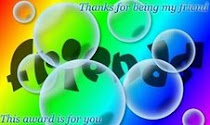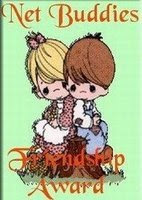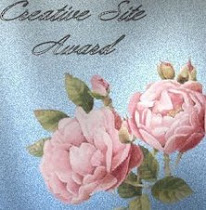I was checking my dresser the other day, found out I have cosmetics, perfumes, lotions, hair gel and even facial foam wash that I haven't used yet. Now that I consider myself a low maintenance mom, these things will take months before it gets consumed. And I don't usually wear make up plus I'm so lazy to do beauty rituals before I go to bed. Problem is, I don't know if I have to toss them away or I can still give some to my friends or sisters. Good thing I came upon this article from Good Housekeeping.
Face Makeup
Toss-it time: Six months for liquids; two years for powders
Insider info: You increase the odds of bacterial growth — and, hence, of breakouts or irritation — when you repeatedly dip your brushes and fingers into liquid foundation. Also, as it ages, foundation can go on unevenly, creating a streaky, inconsistent finish. “Oils rise to the top, and the consistency thickens,” explains New York City makeup artist Mathew Nigara. Powders present less of a problem because bacteria can’t grow where there’s no water. However, over time, powders with botanical ingredients like aloe or jojoba can become harder to blend and are more likely to crumble, as their trace amounts of water evaporate.
Mascara
Toss-it time: Three months
Insider info: “A mascara tube is a dark, wet environment — the perfect breeding ground for bacteria,” says New York City optometrist Andrea Thau, O.D. “Preservatives in a mascara only work for so long.” Dr. Thau knows from firsthand experience: She once developed a sty from a makeup artist’s mascara wand. Plus, three-month-old mascara is a non performer. “It’s chalky and powdery, and any lengthening or thickening fibers often separate from the fluid, so the mascara stops going on in a smooth, even coat,” says makeup artist Cristina Bartolucci. To avoid hastening the demise of your mascara, never pump the wand — that pushes air into the tube, causing it to dry out faster. Instead, slowly draw out and twist the brush to scrape the tube’s interior and pick up product.
Eyeliner and Eye Shadow
Toss-it time: Liquid eyeliners, three months; cream eye shadows, six months; pencil eyeliners and powder eye shadows, two years
Insider info: As they do with mascara, bacteria tend to flourish in liquid-eyeliner tubes, and the product dries out. Pencil eyeliners have a longer shelf life because you can create a fresh, clean surface each time you sharpen them. (Just be sure to regularly sanitize your sharpener with rubbing alcohol.) Powder shadows, like pressed powders, are less prone to contamination because they, too, lack water (if you wet them, toss after six months). But aging eye shadows have performance issues: They get packed down, making it harder to pick up pigment with your brush.
Lipstick and Lipliner
Toss-it time: Lipstick and gloss, two years; lip liner, two years or more
Insider info: Lipsticks’ water content makes them potential mini reservoirs of bacteria. No surprise, they also dry out with age, says New York City makeup artist Tina Turnbow: “They no longer look creamy on the lips.” Long-wearing formulas may have an even shorter life span since they often contain ingredients that evaporate more quickly than creamier formulas. Pencil lipliners, like eyeliners, may last a little longer since putting them through a sharpener removes the old surface.
Nail Polish
Toss-It Time: One to two years
Insider info: When polish expires, the consistency turns gooey or stringy. Formulas are especially sensitive to temperature extremes and humidity, so avoid storing in the bathroom.
Skin Care
Toss-it time: Acne creams and other over-the-counter products that contain drugs are FDA regulated and usually carry expiration dates. But cosmeceuticals (products claiming to have anti-aging and skin-changing benefits) are not regulated, and once they’ve been used, they shouldn’t be kept for more than six months — or, if they’re in pump bottles, a year — says Wilson.
Insider info: “Some ingredients [such as vitamin C, retinol, and hydroquinone] degrade even more rapidly if they’re left in direct sunlight or exposed to air,” says Tina Alster, M.D., a Washington, D.C., dermatologist. Less frequently — but more alarmingly — certain products can actually become more potent over time, says Boston dermatologist Ranella Hirsch, M.D. The reason: Active ingredients like retinol and glycolic acid become more concentrated as their bases degrade, separate, or evaporate. And when proportions change, your skin may get irritated. To prevent problems, store cosmetics properly, discontinue use after six months, and look for products that come in a pump, which helps keep air out. Another option that’s starting to hit shelves: special jars that dispense creams through a tiny hole or slit when you press the top (an internal “floor” rises with each push).
Sunscreen
Toss-it time: Six months
Insider info: Sunscreens are FDA regulated, and though they usually have expiration dates of at least one year, that date indicates the purchasing time frame. When you open a tube, water may start evaporating, causing the formula to eventually become unstable. Once that happens, the ingredients are no longer evenly distributed, so you may get a lot in one dose, but nearly none in another. Protect your tube by storing it out of the sun.
Hair Products
Toss-it time: One year
Insider info: Always close the caps of shampoos, conditioners, and styling products tightly. Otherwise, water and air can get in, breaking down the formulas or causing them to separate. (Good news for hairspray users: Aerosol cans are the best product protectors going, so sprays should stay good even longer.)
Fragrance
Toss-it time: Two years — or potentially many more
Insider info: “Eau de toilettes and perfumes can last for several years, as long as they’re kept out of humidity and sunlight,” says Robert Gerstener, co-owner of Aedes de Venustas, a New York City fragrance emporium. “Both of these elements can alter notes in a fragrance, which will then change the overall scent.”
Simple Stay-Fresh Secrets
- Wash and dry your hands thoroughly before putting your fingers into a product.
- Avoid reinfection. Stop using all eye makeup if you have an eye infection and lip products if you have a cold sore. The exceptions: lipsticks, lip liners, and eye pencils, which can be shaved clean with a knife or sharpener. (Just cleaning with a tissue won’t suffice.)
- Smell your mascara when you first purchase it. If you recognize that scent, you’ll know when it goes bad: Expired mascara often takes on a funny, chemical odor.
- Choose a cotton-tipped swab or disposable sponge to apply makeup to a pimple — and avoid double-dipping. Going back and forth from the product to the affected area with your finger or a sponge can lead to contamination.
- Try to use labels, stickers that “remember” when a product was first opened and alert you when it’s no longer wise to use it.






























